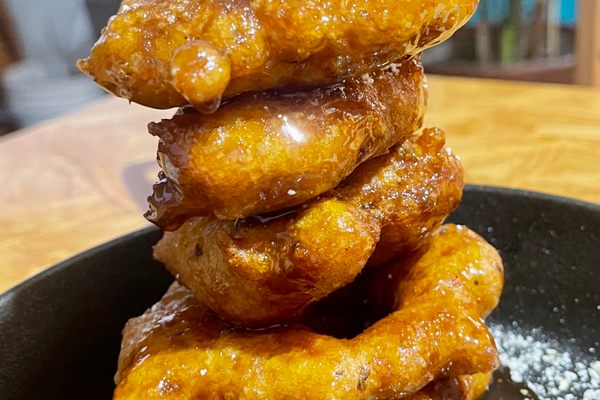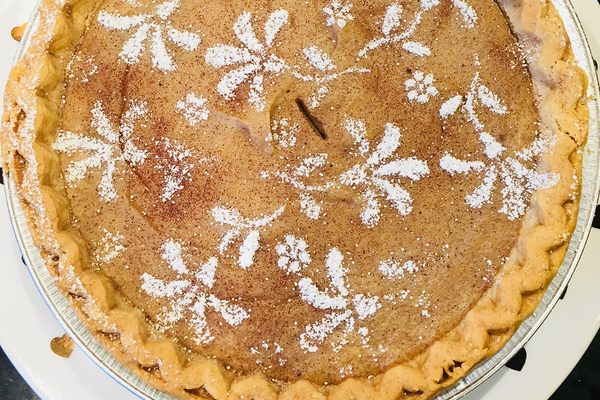Ingredients & Condiments
Chuños
A key step in the Andean technique of freeze-drying potatoes is stomping on them.
Humans use a variety of tools to preserve foods: refrigerators, salt, sunlight. But in Bolivia and Peru, people have long used another key tool: their feet.
Stomping on food is actually part of an early freeze-drying process that indigenous societies in the Andes developed to preserve potatoes, their staple crop. Which is pretty remarkable, because freeze-drying, a technique famously used by NASA to preserve food for its astronauts, was not “invented” until 1906. But as far back as at least the 13th century, long before the arrival of the Spanish in the Andean region, and even before the Incan Empire controlled the area, people in modern-day Bolivia and Peru made freeze-dried potatoes called chuños, based on the Quechua word ch’uñu. They are still made today.
Making chuños is a curious, many-step procedure. First, freshly harvested potatoes are exposed to freezing mountain temperatures for several nights, until they are frosted over. During the warmer daylight hours, farmers trample the potatoes underfoot, flattening them to remove any moisture.
After several days of stomping interspersed with freezing nights, the potatoes are ready to become one of two types of chuño. If the trampled, frozen potatoes are left out in the sun to dry, they become chuños negros, or black chuños. If they are washed and peeled before drying in the sun, the tubers are known as chuños blancos, or white chuños.
Chuños can be stored for years because bacteria, yeast, and mold need moisture to grow. Chuños’ long-lasting nature and versatility as a starchy staple has made them a vital element of Andean cuisine. People trying chuños for the first time tend to describe the flavor with words like “chalky.” But they are a reliable hedge against drought, and they are often served with an Andean chile called ají, rehydrated and used in soups, or pulverized into a flour and used in baked goods. In the pre-Columbian era, Incan armies used chuños for sustenance on long journeys.
In this way, chuños represent the innovations of pre-Columbian Andean societies. Centuries before industrial freeze-drying was invented, indigenous groups were using this effective and unusual method of preservation.
Written By
 Ike Allen
Ike Allen
Sources
- en.wikipedia.org/wiki/Chuño
- www.nytimes.com/2016/08/11/world/what-in-the-world/andes-incas-chuno.html
- airandspace.si.edu/exhibitions/apollo-to-the-moon/online/astronaut-life/food-in-space.cfm
- www.smithsonianmag.com/history/how-the-potato-changed-the-world-108470605/?all
- www.zmescience.com/medicine/nutrition-medicine/chuno-taters/
















